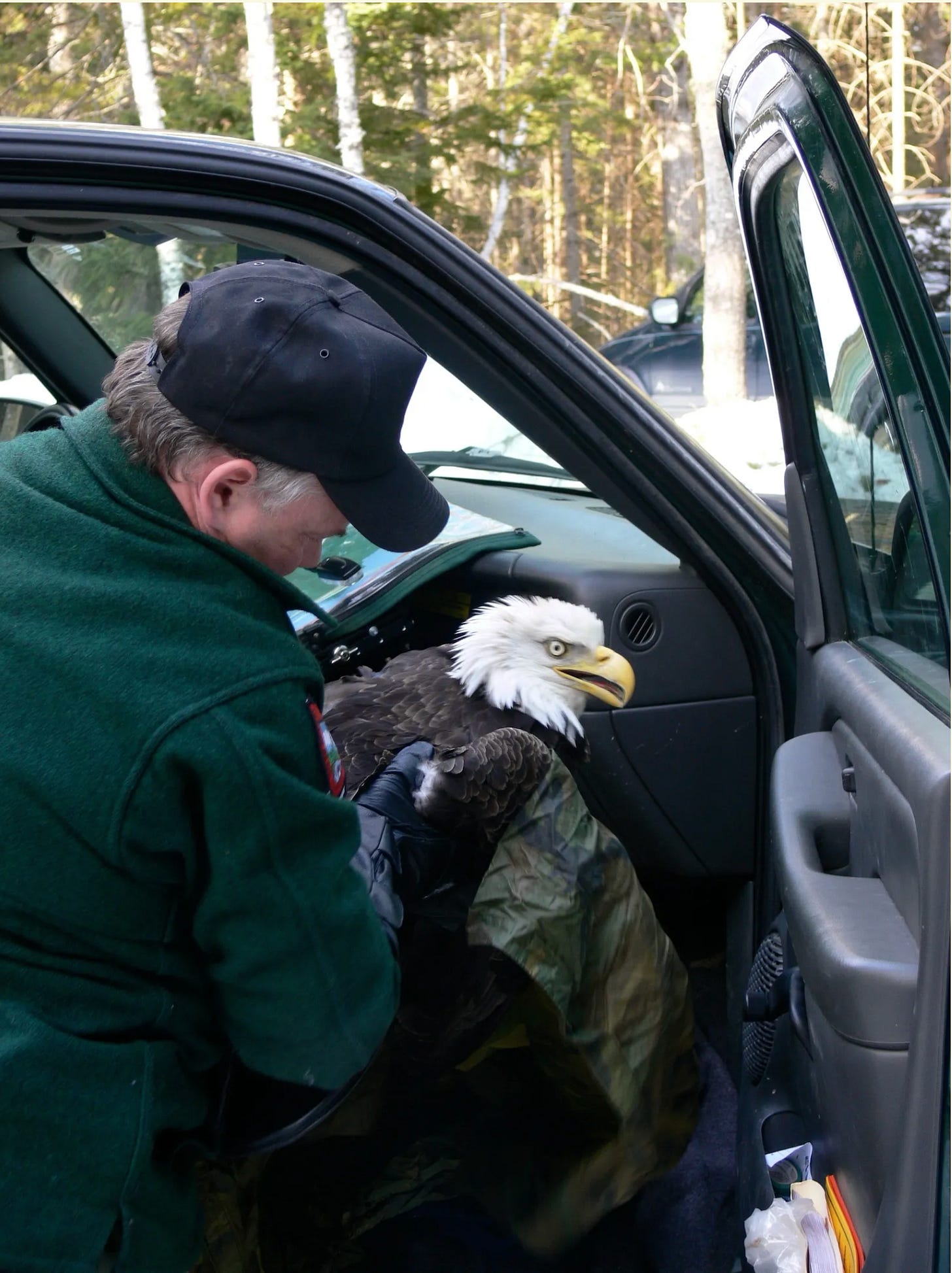BAR HARBOR—The goal of The Acadia Wildlife Center is to rehabilitate animals and return them to their natural habitat.
That isn’t always possible, but when it is? It becomes a special kind of moment. An eagle leaves a cage and heads back to the sky, or at least a good tree branch. A turtle moseys back into water. A porcupine skedaddles back into the forest.
All of this requires time, knowledge, money, and awareness, not just from the staff at the center and its board, but from the community. The center’s created a brand new website to help spread its mission this year.
The center also has a chance at a grant from My Giving Circle, and there’s a March 31 deadline for the potential $1,00,000 in grants. It gives $26,000 to the top ten charities. Currently, the center is ranked 28.
You can also donate directly to support the center’s work. Begun by Coleen Doucette in 1994, Ann Rivers became the director in 1997, continuing until 2023, when she passed the reigns to Tony Mullane, her son.
For thirty years, on just 15 acres by Acadia National Park, the wildlife center has maintained a clinic for wildlife native to the area in need. Taking care of all those animals isn’t easy. It also isn’t cheap.
“This grant would go a long way to benefit the animals,” said Denise Shomo.
“At any time, we must be ready to treat, feed, and house anything from a mouse to a moose. AWC takes most species of native mammals, birds, reptiles, and amphibians specializing in the care of large mammals, aquatic mammals, and bats,” its website reads. “There are a few exceptions: we refer raccoons and fawns to other rehabilitators; and the state of Maine currently restricts the rehabilitation of bears.”
Each year Rivers has fielded thousands of calls from people worried and concerned about wild animals. Every day there are up to 100 animals living in the center’s spaces.
Back in 2000, Rivers told me, “I do it because I love animals. It’s really a community service. Most people just presume that it’s being supported by the park or Fish and Wildlife.”
It wasn’t. Twenty-four years later, the nonprofit still needs support. The nonprofit often applies for grants and participates in competitions like the one at My Giving Circle.
Sixty percent of the animals they see, Mullane said, are released into the world again, which is an incredibly high success rate. Others are euthanized almost immediately because there is no hope. Some animals stay months before being well enough to go back into the world. Some, like Jax, a fox, would never make it out there. They stay.
The community has helped make that happen, Tony stressed. In 2018, the community raised $4,602 in a GoFundMe page to create a bat habitat. The center is one of just two sites in the state that rehabilitates bats. It is Maine’s first bat flyaway.
Over the years, the 10-by-10 cabin and bunny hutch on the 15 private acres in Bar Harbor has expanded to not just include the bat habitat. The small original room where Ann did her medical work has been abandoned and now she works in a 1,100-square foot clinic and nature center. Outdoor enclosures help different animals recover from their ailments. The eagles have a flight pen. The loon has a water cage. The skunks have a bunch of tunnels to play in.
But the need doesn’t go away.
In a New York Times opinion piece, contributor Margaret Renkl wrote poignantly about the link between animals, wildlife rehabilitation, and humans,
“For rehabbers in the best-equipped centers — those with ultrasound machines, lead testers and gas sedation equipment — to work in wildlife rescue is to have their hearts broken again and again. There is just so much suffering, and a huge amount of it could be avoided if human beings took just a little more care to share the land with other creatures. Why do wildlife rehabbers keep doing this heart-wrenching, physically demanding, time-consuming and often very expensive work?
“It’s because they have a tender heart for the creatures who try so hard to adapt to our ways. I think they must also have a tender heart even for the human beings who unknowingly create the hazards that lead to so much pain and destruction. When people call, frantic that they’ve run over a turtle with a lawn mower, the wildlife rescue experts sigh and say, ‘When can you bring it in?’
“Rehabbers go to extraordinary lengths to save every injured animal. If they can’t save the animal, they can at least give it a merciful death. And they can take the opportunity to explain why it’s so important to walk the yard before mowing, giving wildlife of all kinds a chance to flee. Each animal in rescue represents a human being who has learned something important about living more gently in the world. Rehabilitating the human heart may be the most important work these organizations do.”
LINKS TO LEARN MORE
Acadia Wildlife can be reached at (207) 288-4960 from 9 a.m. to 4 p.m. according to its website, 9 to 5 according to its sign.
You can register for its events, read its blog, and get the latest from Acadia Wildlife Center on our brand-new website!
To donate directly click here.
MY GIVING CIRCLE donation page.
How to tell if an animal needs help.
Acadia Wildlife’s Facebook page.
Superhero Passes The Wildlife Cape To Son
BAR HARBOR—Ann Rivers has spent a lifetime making sure wild animals can be healthy and free. She’s nursed baby bobcats, repaired bat extremities, handled eagle talon injuries, and dealt with traumatic brain injuries in too many species to mention. She has done it all, deep in the Bar Harbor woods with a few volunteers, while fielding thousands of phone c…









